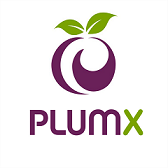Effects of the E-tendering in Public Procurement Performance at Iruwasa
Abstract
This study examined the effects of e-tendering on public procurement performance at the Iringa Urban Water Supply and Sanitation Authority (IRUWASA), to evaluate its effectiveness in enhancing procurement efficiency, transparency, and supplier participation. Guided by the Technological Advancement Theory and the Digital Divide Theory, a quantitative cross-sectional survey was conducted among 96 IRUWASA employees selected through simple random sampling. Data were collected using structured questionnaires and organisational records, and analysed with SPSS version 20, with reliability and validity confirmed through Cronbach’s Alpha and the KMO and Bartlett’s tests. Findings indicate that e-tendering significantly reduced procurement cycle times, increased bidder participation, and enhanced transparency, thereby strengthening operational efficiency and accountability. However, challenges such as inadequate ICT infrastructure, limited digital literacy, and occasional system interruptions were reported as barriers to optimal performance. The study recommends establishing a dedicated NEST Implementation Team, providing continuous training, ensuring adherence to e-tendering procedures, and promoting proactive supplier engagement to maximise the system’s benefits. Future research should explore the longitudinal impacts of e-tendering and conduct comparative studies across multiple public procurement entities in Tanzania
Downloads
References
Abdullahi, A., & Yusuf, M. (2022). Adoption of e-procurement systems and public procurement performance in developing countries. International Journal of Supply Chain Management, 11(2), 75–84.
Abiola, T., & Ojo, M. (2023). Mobile-enabled e-tendering platforms and supplier participation in public procurement. African Journal of Business and Economic Research, 18(3), 99–115.
Afolabi, A. (2022). E-procurement implementation and transparency in the public sector of developing economies. Journal of Public Procurement and Contract Management, 22(1), 45–60
Afolabi, S. (2022). Assessing the impact of digital literacy on public procurement performance in Ghana. Journal of African Public Procurement, 6(1), 55–70.
Ameyaw, C., Mensah, S., & Osei-Tutu, E. (2021). Transparency and efficiency in e-tendering: Encouraging supplier participation in the procurement process. Journal of Public Procurement and Contract Management, 21(3), 145–162.
Amina, A. (2014). Research methods for business students in Africa. Nairobi: Longhorn Publishers.
Bagozzi, R. P., & Dholakia, U. M. (2022). E-procurement systems and their impact on public sector efficiency. Journal of Public Procurement and Supply, 22(3), 156–172.
Basheka, B. C., & Mugabira, M. I. (2018). Measuring professionalism variables and their implication to procurement outcomes in Uganda. Journal of Public Procurement, 18(2), 123–145.
Brynjolfsson, E., & McAfee, A. (2014). The second machine age: Work, progress, and prosperity in a time of brilliant technologies. W. W. Norton & Company.
CAG. (2020). Annual general report of the Controller and Auditor General on the audit of public authorities and other bodies for the financial year ended 30th June 2020. National Audit Office of Tanzania.
Chae, B. K., Olson, D. L., & Sheu, C. (2020). The impact of supply chain analytics on operational performance: Evidence from e-procurement data. Decision Support Systems, 131, 113–142.
Chika, I., Umeh, C., & Okeke, G. (2025). Data-driven decision making in e-procurement: A framework for public institutions. African Journal of E-Government, 4(1), 22–38.
Christensen, C. M. (1997). The innovator’s dilemma: When new technologies cause great firms to fail. Harvard Business Review Press.
Creswell, J. W. (2014). Research design: Qualitative, quantitative, and mixed methods approaches (4th ed.). Thousand Oaks, CA: SAGE Publications.
Creswell, J. W., & Plano Clark, V. L. (2018). Designing and conducting mixed methods research (3rd ed.). Thousand Oaks, CA: SAGE Publications.
Croom, S., & Johnston, R. (2017). E-service: Enhancing internal customer service through e-procurement. International Journal of Service Industry Management, 14(5), 539–555.
Daniel, E. (2016). The role of e-procurement in improving organizational performance. International Journal of Procurement Management, 9(3), 267–284.
Davila, A., Gupta, M., & Palmer, R. (2018). Moving procurement systems to the internet: The adoption and use of e-procurement technology models. European Management Journal, 21(1), 11–23.
Debussche, X., & Laperche, B. (2021). System integration and its effect on public procurement efficiency. European Journal of Procurement Studies, 8(3), 91–109.
DiMaggio, P., & Hargittai, E. (2021). From the “digital divide” to “digital inequality”: Studying internet use as penetration increases. Princeton University Press.
Drucker, P. F. (1985). Innovation and entrepreneurship: Practice and principles. Harper & Row.
Fadhil, A. (2013). Challenges of e-procurement adoption in developing countries. International Journal of Business and Management Studies, 2(1), 45–58
Fadhil, A. (2021). Digital transformation and procurement analytics: Opportunities and challenges. Journal of Supply Chain Innovation, 7(2), 110–127.
Gelderman, C. J., Ghijsen, P. W. T., & Brugman, M. J. (2016). Public procurement and EU tendering directives: Explaining non-compliance. International Journal of Public Sector Management, 29(3), 269–285.Gilster, P. (1997). Digital literacy. Wiley Computer Pub.
Gunasekaran, A., Subramanian, N., & Papadopoulos, T. (2023). E-procurement adoption and supply chain performance: A review of the empirical literature. International Journal of Production Economics, 250, 108682.
Gunasekaran, A., & Ngai, E. W. T. (2018). Adoption of e-procurement in developing countries: The impact of organizational readiness and culture. International Journal of Production Economics, 195, 303–318.
Hague, C., & Payton, S. (2010). Digital literacy across the curriculum. Futurelab.
Hargittai, E. (2022). Digital literacy: Concepts, policies and practices. MIT Press.
Kamau, G., & Njuguna, J. (2019). Technical infrastructure and e-government implementation in developing countries. International Journal of Information Systems and Project Management, 7(2), 35–47.
Kamau, P., & Njuguna, L. (2019). Technical infrastructure and e-procurement efficiency in public institutions. Kenya Journal of ICT and Procurement, 5(2), 33–46.
Karanja, D., Otieno, P., & Mugo, R. (2023). Impact of e-procurement on procurement cycle time: A case of Kenyan public organizations. African Journal of Procurement and Supply Chain Management, 9(2), 34–47.
Karanja, P., Njiru, H., & Wanyoike, D. (2023). E-procurement implementation and service delivery in Kenya’s public sector. African Journal of Business Management, 17(3), 45–56.
Kauffman, R. J., & Walden, E. A. (2001). Economics and electronic commerce: Survey and research directions. International Journal of Electronic Commerce, 5(4), 5–116.
Kihoro, J. M., Makokha, E. N., & Mwaura, G. (2020). Infrastructure challenges hindering effective e-procurement implementation in East Africa. East African Journal of Information and Communication Technology, 1(2), 23–37.
Kim, S., & Lee, H. (2021). Improving procurement transparency through e-procurement systems: Evidence from Asia. Government Information Quarterly, 38(4), 101–150.
Kothari, C. R. (2019). Research methodology: Methods and techniques (4th ed.). New Delhi: New Age International Publishers.
Kumar, R. (2019). Digital literacy and public procurement performance: A study of Indian public sector organizations. Journal of Public Procurement and Technology, 12(4), 201–219.
Kumar, R., & Saini, M. (2018). E-procurement: Concepts and practices. International Journal of Management Studies, 5(1), 45–51.
Kumar, S., & Singh, A. (2019). Assessing the role of technical systems in public procurement efficiency. Indian Journal of Supply Chain Management, 11(3), 145–160.
Lee, J. (2016). The role of technical infrastructure in enhancing procurement efficiency: Evidence from South Africa. African Journal of Public Procurement, 3(1), 17–29.
Lee, S., & Park, M. (2024). The impact of IT infrastructure on procurement performance: A South Korean perspective. Asia-Pacific Journal of Public Administration, 10(1), 50–64.
Makoba, S. M., Nyamagere, G., & Eliufoo, H. (2017). Risk factors in e-procurement implementation in Tanzania’s construction industry. Journal of Construction Project Management and Innovation, 7(2), 1766–1785.
McCue, C. P., & Prier, E. (2007). Using agency theory to model cooperative public purchasing. Journal of Public Procurement, 7(1), 1–35.
Mchopa, A. D. (2021). An assessment of ICT infrastructure on e-procurement performance in Tanzania's public institutions. Journal of African Public Administration, 3(1), 1–15.
Mensah, J. (2021). Transparency and accountability in public procurement: The role of e-procurement systems. African Journal of Management Research, 29(1), 70–88.
Mhando, A. (2024). Infrastructure challenges in implementing e-procurement systems in Tanzanian local governments. Tanzania Journal of ICT and Development, 3(1), 67–75.
Mhando, H. (2018). Challenges facing e-procurement implementation in Tanzania’s public sector. Tanzania Journal of Procurement and Logistics, 5(1), 22–34.
Mhando, H., Salim, J., & Mbilinyi, R. (2023). The impact of e-procurement systems on public sector transparency in Tanzania. East African Journal of Business and Economics, 2(1), 41–55.
Montalbán-Domingo, L., García-Segura, T., Pellicer, E., & Varnäs, A. (2018). Social sustainability in public procurement: A practical scoring review. Journal of Purchasing and Supply Management, 24(2), 63–77.
Mugenda, O. (2021). Social science research: Theory and practice (Rev. ed.). Nairobi: Applied Research and Training Services.
Muli, J., Atieno, M., & Otieno, D. (2023). E-procurement and public accountability in Africa: A review of evidence. African Public Procurement Review, 5(1), 89–102.
Mushi, J., & Nnko, A. (2020). E-procurement practices and transparency in Tanzanian public institutions. Tanzania Journal of Development Studies, 18(2), 89–104.
Mutuku, M., & Mwikali, J. (2023). E-tendering and cost efficiency in public procurement in Kenya. Journal of African Public Administration and Management, 15(2), 51–68.
Mwangi, W., Otieno, F., & Kiragu, D. (2022). Comparative study on e-procurement systems performance in East Africa. African Journal of Information Systems, 14(4), 301–317.
Mwita, C. (2023). An analysis of public procurement challenges in Tanzania: A case of e-procurement systems. Tanzania Public Administration Review, 4(2), 77–90.
Mwita, C., Mhando, H., & Salum, M. (2024). Enhancing operational efficiency through e-procurement: The case of IRUWASA. Journal of Public Sector Innovations, 6(1), 25–39.
Mwita, J. (2024). Cost-efficiency in public procurement through e-platforms: Evidence from Tanzania. Journal of Public Administration and Policy Research, 16(1), 11–20.
Mwita, J., Mushi, A., & Mhando, S. (2024). E-procurement adoption and performance of public utilities in Tanzania: Evidence from IRUWASA. Tanzania Journal of Public Administration, 9(1), 112–130.
Nduka, F., Eze, R., & Obi, T. (2023). Enhancing transparency through e-procurement in public sector: A Nigerian perspective. International Journal of Digital Governance, 6(3), 78–89.
Ndunguru, S. (2023). Technical infrastructure challenges in implementing digital procurement systems in Tanzanian local authorities. Journal of e-Government Studies, 2(1), 18–30.
Ngowi, H., Lema, M., & Ramadhan, F. (2022). Case study on local government e-procurement adoption: Evidence from Tanzania. African Journal of Governance and Development, 11(2), 112–125.
Ngulube, P. (2016). The role of ICTs in managing knowledge for sustainable agricultural development in Africa. South African Journal of Information Management, 18(1), 1–8.
Nguyen, T., & Tran, H. (2021). Integration and training for effective e-procurement adoption in developing economies. Journal of Information Systems and Technology Management, 18(3), 29–44.
Norris, P. (2001). Digital divide: Civic engagement, information poverty, and the internet worldwide. Cambridge University
Omondi, A., & Wambua, J. (2024). E-procurement adoption challenges in Kenya’s public sector. East African Journal of Public Administration, 9(1), 45–59.
Otieno, G., & Wekesa, C. (2023). ICT infrastructure and e-procurement system performance in the Kenyan public sector. Kenya Journal of ICT Studies, 6(2), 55–70.
Patel, R., & Mehta, D. (2022). E-procurement systems and compliance in public procurement. International Journal of Public Sector Management, 35(5), 550–567.
Peterson, R. (2019). Digital literacy and organizational effectiveness. International Journal of Management Reviews, 21(4), 479–493.
Ramanathan, U., Gunasekaran, A., & Subramanian, N. (2017). E-procurement and supply chain performance: A comprehensive review. International Journal of Production Research, 55(5), 1470–1488.
Salum, M., Mhando, H., & Mwita, C. (2024). Integrating e-procurement systems in Tanzanian public entities: Opportunities and challenges. Journal of ICT in Africa, 10(2), 123–137.
Saunders, M., Lewis, P., & Thornhill, A. (2019). Research methods for business students (8th ed.). Harlow, England: Pearson Education Limited.
Schoenherr, T., & Mabert, V. A. (2011). E-procurement adoption in the United States: Testing driver–barrier models. International Journal of Production Research, 49(14), 4065–4082.
Sönnichsen, S. D., & Clement, J. (2020). Review of green and sustainable public procurement: Towards circular public procurement. Journal of Cleaner Production, 245, 118–901
Tan, C. W., Pan, S. L., & Lim, E. T. K. (2020). ICT adoption and organizational performance: A meta-analysis. Information & Management, 57(1), 103-176.
Tanzania Procurement Act. (2011). Public Procurement Act No. 7 of 2011. Government Printer.
Thai, K. V. (2021). Public procurement re-examined. Journal of Public Procurement, 21(1), 1–25.
Turban, E., Pollard, C., & Wood, G. (2015). Information technology for management: On-demand strategies for performance, growth, and sustainability (10th ed.). Hoboken, NJ: Wiley.
UNDP. (2023). Digital transformation for development: Challenges and opportunities. United Nations Development Programme.
United Republic of Tanzania. (2019). National ICT policy. Ministry of Communications and ICT.
URT. (2020). Tanzania Digital Economy Blueprint. Ministry of Information, Communication and Information Technology.
Vaidya, K., Sajeev, A. S. M., & Callender, G. (2017). Critical factors influencing e-procurement implementation success in the public sector: A systematic review. Benchmarking: An International Journal, 24(2), 422–457.
Veblen, T. (1904). The theory of business enterprise. New York: Charles Scribner’s Sons
Wallen, N. E., & Frank, K. L. (2019). Educational research: A guide to the process (3rd ed.). New York: Routledge.
Wang, Y., & Wang, Y. (2019). Technology acceptance model: User acceptance of information technology. Journal of Organizational Computing and Electronic Commerce, 19(3), 159–175.
World Bank. (2022). Digital public procurement: Building transparency and efficiency. World Bank Publications.
Yadav, R. K., & Singh, P. (2021). E-procurement adoption and challenges in developing countries: A systematic literature review. International Journal of Procurement Management, 14(1), 1–22.Zhou, Z., & Xu, J. (2022). Assessing the impact of technical infrastructure on e-procurement efficiency. Journal of Public Administration and Development, 42(1), 65–79.
Copyright (c) 2025 Menyauli Peniel Salekwa, Yasinta Kassimba, PhD, Bahati Golyama, PhD

This work is licensed under a Creative Commons Attribution 4.0 International License.




























